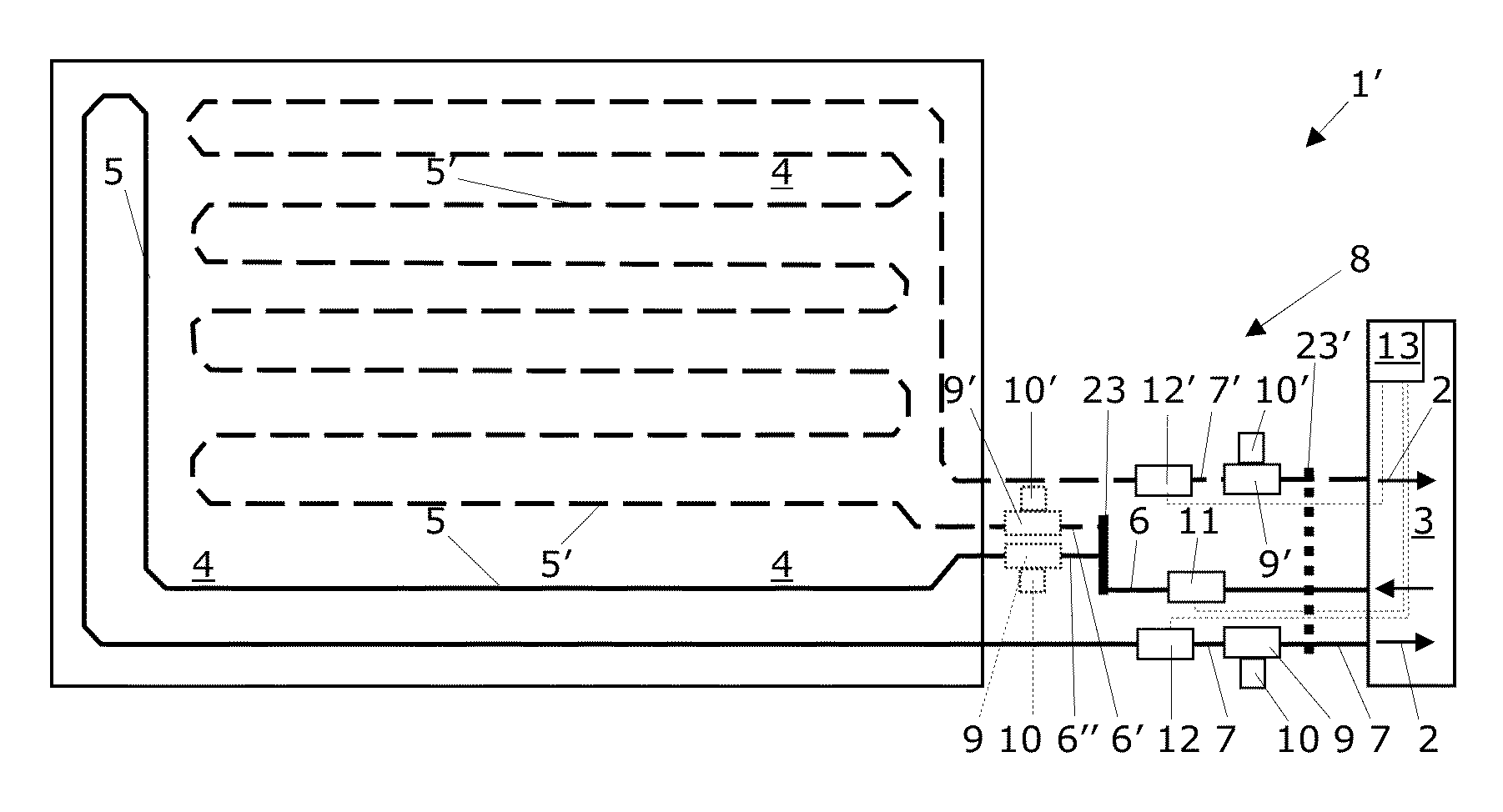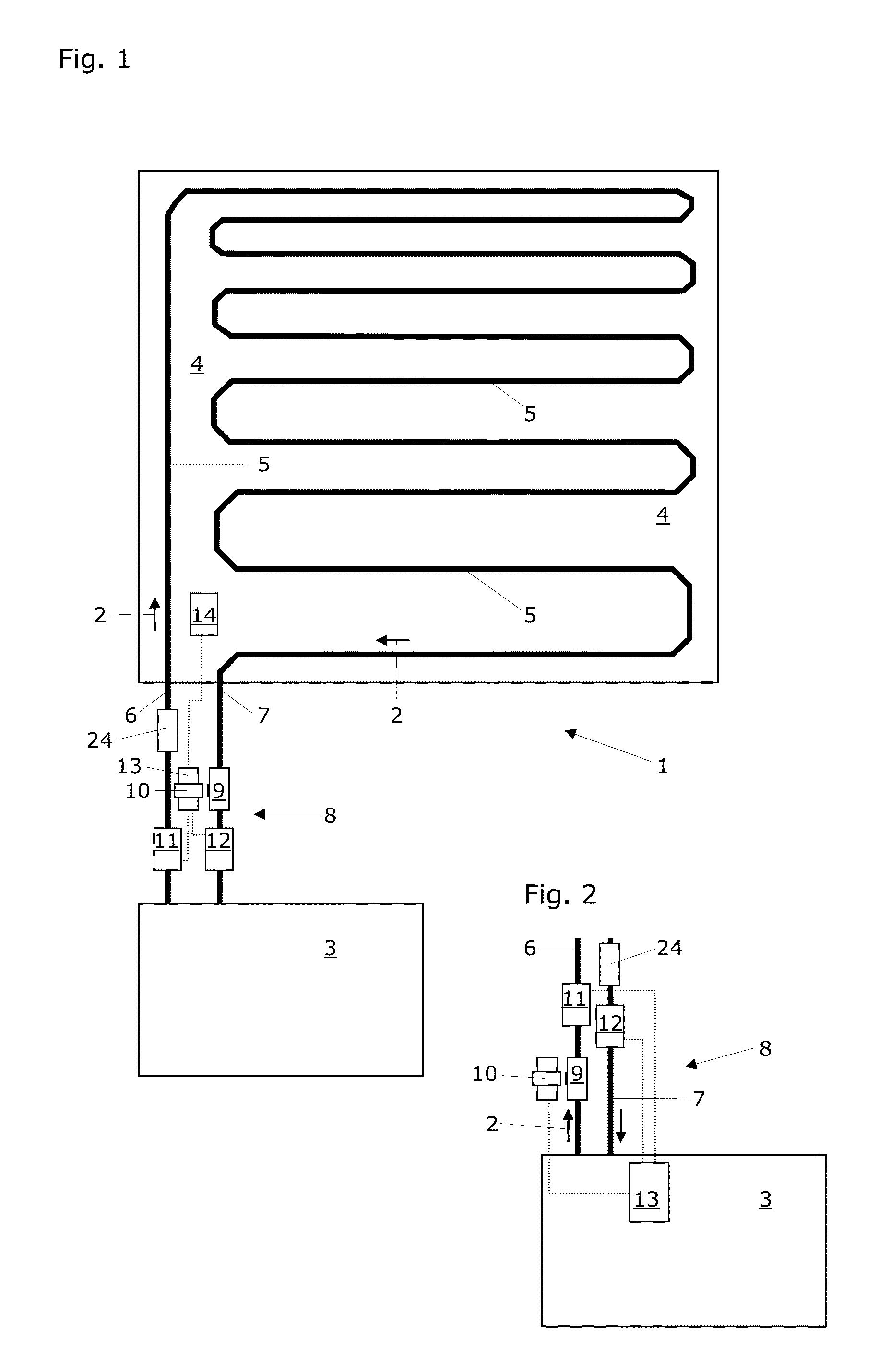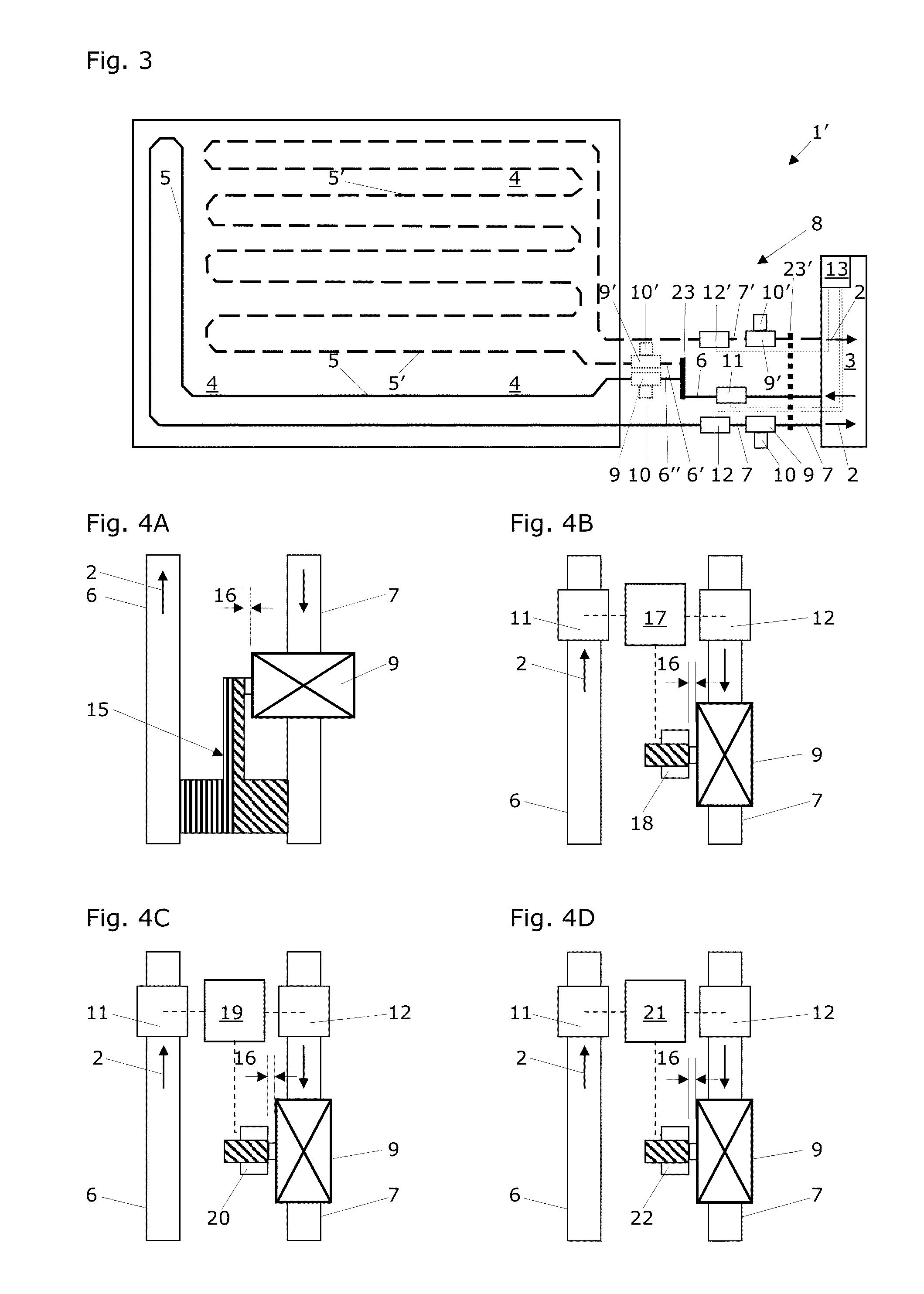Method and system for controlling the temperature of components
a technology of temperature control and components, applied in the direction of lighting and heating apparatus, heating types, instruments, etc., can solve the problems of insufficient energy efficiency, uneven heat distribution, and inability to precisely set individual strands or heating circuits, so as to achieve uniform energy delivery to components, reduce the effect of substantial disadvantages and reduce the effect of significant disadvantages
- Summary
- Abstract
- Description
- Claims
- Application Information
AI Technical Summary
Benefits of technology
Problems solved by technology
Method used
Image
Examples
first embodiment
[0054]FIG. 1 shows a schematic top view of a simpler temperature-control system according to a This temperature-control system is capable of carrying out the method according to the invention for the controlling the temperature of a component. This simpler temperature-control system 1 for carrying out the temperature-control method according to the invention comprises a temperature-control device 3, which is implemented to heat or cool a temperature-control fluid 2. This simpler temperature-control system 1 additionally comprises a temperature-control arrangement 5, which is implemented to conduct the temperature-control fluid 2 through a component 4 to be controlled in temperature (in the exemplary form of a meandering pipe laid in the component 4).
[0055]This simpler temperature-control system 1 additionally comprises a supply line 6, via which the temperature-control device 3 is connected to the temperature-control arrangement 5 to supply the temperature-control fluid 2, and a re...
second embodiment
[0063]Comparably thereto, FIG. 2 shows a schematic partial top view of the controller of a simpler temperature-control system in which the sensors for the supply temperature 11 and the return temperature 12 are arranged near the valve 9, which is inserted into the supply line 6 here. The actuator 10 is again arranged directly at the valve 9. The regulator 13 is located at a practically arbitrary distance from the above-mentioned components of the controller 8 and is located near the temperature-control device 3 or is even integrated in the latter. The regulator 13 is electrically connected to the supply temperature sensor 11 and to the return temperature sensor 12 and also to the actuator 10, which is illustrated here by dotted lines. The shutoff valve 24 is inserted into the return line 7 here. The controller 8 is therefore distributed onto a region outside the component 4 and a region at or inside the temperature-control device 3.
[0064]FIG. 3 shows a schematic top view of a more ...
PUM
 Login to View More
Login to View More Abstract
Description
Claims
Application Information
 Login to View More
Login to View More - R&D
- Intellectual Property
- Life Sciences
- Materials
- Tech Scout
- Unparalleled Data Quality
- Higher Quality Content
- 60% Fewer Hallucinations
Browse by: Latest US Patents, China's latest patents, Technical Efficacy Thesaurus, Application Domain, Technology Topic, Popular Technical Reports.
© 2025 PatSnap. All rights reserved.Legal|Privacy policy|Modern Slavery Act Transparency Statement|Sitemap|About US| Contact US: help@patsnap.com



